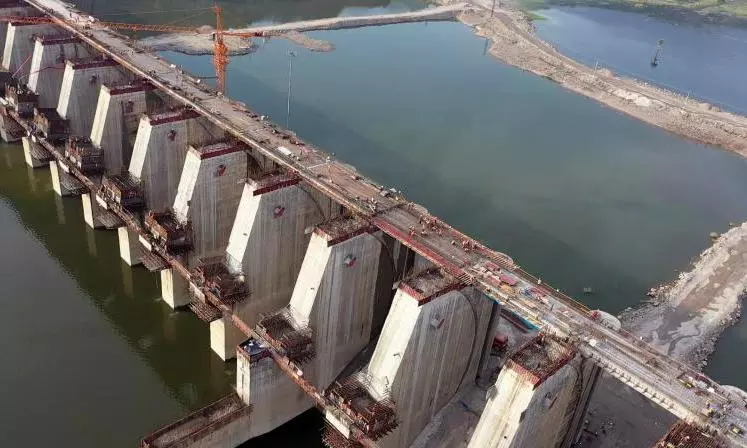Telangana expands Polavaram backwater study
The irrigation department has begun sharpening its focus on analysing the impact of backwaters of Andhra Pradesh’s Polavaram irrigation project in Telangana, with more aspects being added to the study that the state government has asked IIT-Hyderabad to conduct.

Hyderabad:The irrigation department has begun sharpening its focus on analysing the impact of backwaters of Andhra Pradesh’s Polavaram irrigation project in Telangana, with more aspects being added to the study that the state government has asked IIT-Hyderabad to conduct.
The irrigation department had on January 29 written to IIT-H to take up the study and submit its report in one month, following a directive from Chief Minister A. Revanth Reddy, who had expressed concern over the potential threat Polavarm poses to Sri Sita Ramaswamy temple at Bhadrachalam. The temple town experienced severe flooding in 2022 when the river recorded an inflow of 27 lakh cusecs of water.
Among the terms for the study that were sought in 2016 were a report from the Central Water Commission (CWC) on Polavaram project’s backwater impact, and the possible scenarios once the neighbouring state completes construction of the project with a 45.72 metres height and achieves full reservoir capacity. Also to be studied was the river’s flow from Bhadrachalam to Dummugudem.
The department is learnt to have held discussions with experts from IIT-H on Thursday, following which they added a few more parameters for the study, including various backwater studies of the project by Central Water Commission, Central Soil and Materials Research Station, along with reports on the river’s flows by AP, Telangana and Odisha.
Over the past three decades different studies had projected flood flows in the river ranging from 28 lakh cusecs to 58 lakh cusecs. According to officials, if a 50 lakh cusec flood occurs in the river, the backwaters from the project could extend up to 146 km behind the dam up to Dummugudem in Telangana.
During the 2022 floods, Godavari, which recorded 24.5 lakh cusecs flow, reached a height of 71 feet resulting in submergence of 102 villages in Telangana impacting 16,000 houses.
In view of these different figures, the department is learnt to have suggested that the new study in addition to examining the likely flood scenarios and impacts, also look into the submergence scenarios resulting from congestion of local natural drainage in the state.

